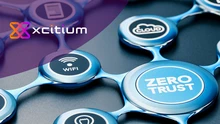
Article contributed by Ali Siddiqui, CPO at BMC
AIOps makes the enterprise more agile by helping IT teams become more proactive and predictive in anticipating challenges that could lead to costly downtime. In addition, it allows machines to solve IT issues by themselves, by using a multilayered approach that enhances the operations of IT using machine learning (ML) and analytics to analyse big data obtained via different tools.
As enterprise systems became more complex, IT practitioners are searching for ways to leverage the huge amounts of data at their fingertips, and the application of ML to that data gave way to AIOps. Just as AIOps has evolved to meet the needs of IT operations teams, these teams have also evolved to meet the needs of their enterprise. Often, they are faced with a huge surge in operational data volumes, which causes a growing number of complexities in IT environments. These increased data volumes are caused by multicloud and remote working environments, agile development methodologies and digital transformation initiatives involving newer application architectures such as containers and ephemeral workloads.
A recent study of large organisation IT departments conducted by Hanover Research found that 69 percent of organisations now apply AI to IT operations and IT service management. Additionally, the AIOps platform market size is expected to grow to 11.02 billion by 2023, promising speed and accuracy in solving wide-ranging IT problems at scale.
Read more about AI in the Enterprise
Often, automation is the most effective when workloads are manual and repetitive. AIOps significantly reduces the amount of time that highly skilled engineers devote to these tasks, which allows them to focus on higher-value initiatives within the enterprise. In addition, AIOps helps IT address complex challenges and cater to data growth, automating the entire IT operations process across hybrid environments to create an accurate inventory. This is so machines can correlate data points independently, and detect patterns across four key practice areas – predictive alerting, event noise reduction, probable cause analysis and capacity analysis.
Predictive alerting and noise reduction
Many IT teams struggle to manage the large numbers of false alerts from the various monitoring tools installed in their environment. Indeed, the alerts can be helpful at times, but they tend to create false alarms and clutter the inbox.
By reducing the noise of events across an environment, AIOps can learn how an environment behaves in both slow and busy periods. This is then used to determine whether a specific alert indicates a incident with potential service impact. IT teams will only be alerted when anomalous behaviour is indicated such as an app degradation or system downtime, which helps with prioritisation and drives efficiencies.
The same intelligence gathered to reduce event noise can also be applied to predictive alerting. In this instance, AIOps can identify innocuous-looking events for further evaluation because those events in the past have contributed to larger issues. This enables a proactive approach to stopping problems and prevents service outages for customers.
Capacity analysis and probable cause analysis
Traditionally, to understand why and how an issue originally occurred can take a lot of time and energy. However, by automating this process with AI, it is possible to know exactly where the problem is and the events that are associated with it, which eventually helps to reduce the mean time to repair (MTTR). From there, AIOps can analyse the data and identify the problem in minutes or even seconds, rather than hours.
Another benefit to AIOps is its ability to offer a topology view, which displays the specific node, impact, how many events have occurred, and any completed change requests. With access to this information, IT teams can investigate the events and changes coming into those specific nodes and see the probabilistic percentage of which node should be the reason behind the actual service degradation.
It is essential for IT teams to understand resource consumption both in the cloud and on-premises. Through advanced analytics and behaviour learnings, AIOps provides better capacity management to understand which resources are being used and when. Furthermore, AIOps can determine what resources are needed to support the services and apps most in demand by customers. In turn, this gives IT teams the intelligence to right-size resources, while keeping costs down.
Adopting and integrating DevOps Frameworks
AIOps can significantly reduce the amount of time that highly skilled engineers devote to tasks, while allowing them to focus on higher-value initiatives within the organisation. Today, AIOps is being integrated into DevOps frameworks, especially log ingestion, analytics, and identification of risks in code. Going forward, its usage in the DevOps framework will shift from a focus on pre-production to include production metrics like user engagement, quality, and business relevance. This will result in DevOps teams leveraging AIOps platforms to monitor applications which accelerate their timelines and streamline development.
The time for AIOps is now
Undoubtedly, digital transformation initiatives represent a shift from centralised IT to applications and developers, as well as an increased pace of innovation and deployment. Additionally, it results in the acquisition of new digital users such as Internet of Things (IoT) devices, machine agents, and application programming interfaces (APIs).
These new innovations and users are taking traditional performance and service-management strategies and tools to the breaking point. IT operations is transformed with AIOps, with automated and AI-based analytics applied to a broad range of data ingested into a modern and open observability platform. This allows teams to focus on driving operational excellence and the organisation has a greater chance of evolving into an autonomous digital enterprise.
AIOps will enable ITOps to intelligently orchestrate infrastructure, applications, and services across hybrid cloud ecosystems to align with the business and address customer needs on demand. It is important for business leaders to recognise the need to digitally transform the entire IT environment, as this will support a smart enterprise that can meet the needs of the fast-moving digital market.












